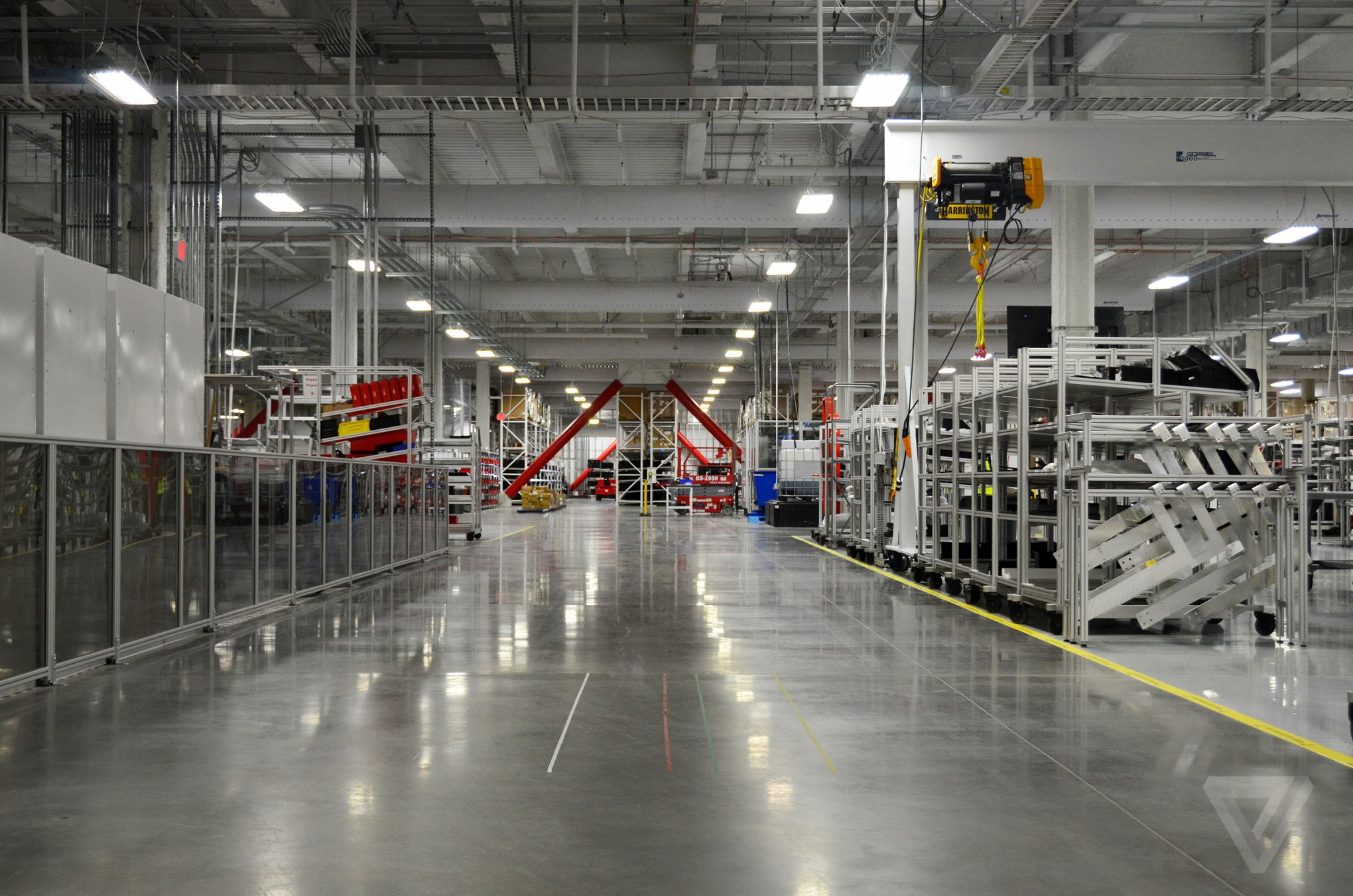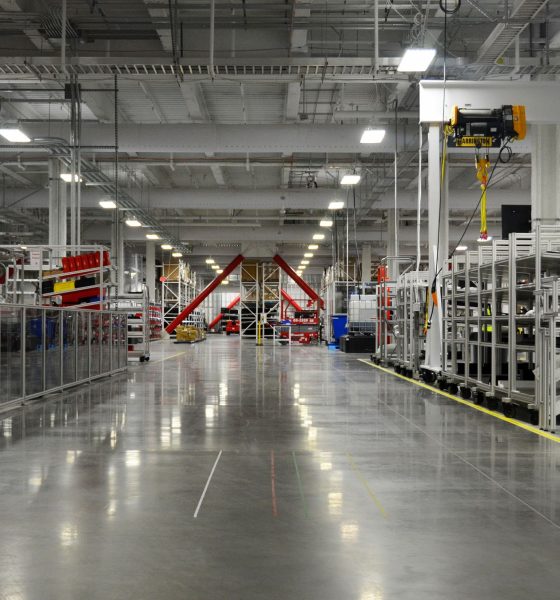

News
Tesla files lawsuit against ex-employee for sabotage, misreporting to media
Tesla filed a lawsuit in a Nevada court today against Martin Tripp, one of its former process technicians, over allegations of hacking, exporting confidential data to outside entities, and misreporting to the media.
Tesla’s lawsuit comes just days after Elon Musk sent out an email to employees informing them that a disgruntled employee has committed sabotage against the company. Sent on Sunday night, Musk’s email did not identify the alleged saboteur, though the CEO noted that what the employee has admitted to so far has been serious. Musk’s email further noted that the employee’s sabotage attempts were made in retaliation of a failed promotion.
Tesla’s lawsuit, which could be accessed in full here, provides a background of Tripp’s employment at Tesla and some of the circumstances that led him to act against the company. According to Tesla’s suit, Tripp started his employment back in October 2017 as a process technician, which gave him access to confidential information pertaining to several facets of Tesla’s manufacturing operations. Eventually, however, Tripp was allegedly unhappy in his role, complaining that his post was not “sufficiently senior.”
Tesla noted that Tripp was eventually reassigned to a new role on May 17, 2018, after his managers identified job performance problems and a tendency to be combative and disruptive to his colleagues. Tripp allegedly expressed anger over his reassignment, retaliating by initiating an attack on Tesla.
The Elon Musk-led company’s suit alleges that on June 14 and 15, Tesla investigators interviewed Tripp about his misconduct. While he allegedly denied any wrongdoing, he eventually admitted to several offenses after evidence was presented. Tripp admitted to writing software that hacked the Tesla Manufacturing Operating System and transferring several gigabytes worth of confidential and proprietary data to outside entities. Among these are images and a video of Tesla’s manufacturing operations. Tripp also admitted that he attempted to recruit additional sources inside Gigafactory 1 to share data outside the company.
Tesla further notes that Tripp had authored a hacking software that could have compromised other employees. Tripp had allegedly misreported to the media as well, making false claims about the quality of the battery modules being installed on the Tesla Model 3.
“While its investigation is still in the early stages, Tesla has also discovered that Tripp authored hacking software and placed it onto the computer systems of three other individuals at the company so that confidential Tesla data could be persistently exported off its network from these other systems to unknown third parties.
“Tripp also made false claims about the information he stole from Tesla. Tripp claimed that punctured battery cells had been used in some Model 3 customer vehicles even though the evidence clearly demonstrates that no punctured cells were ever used. Tripp also used the Tesla data that he exported to grossly overstate the true amount and value of “scrap” material that Tesla generated during the manufacturing process, and he falsely claimed that Tesla was delayed in bringing new manufacturing equipment online at the Gigafactory.”
Tesla has outlined five claims for relief in its lawsuit against the former employee, including violations described in the Defend Trade Secrets Act, the Nevada Uniform Trade Secrets Act, and the Nevada Computer Crimes Law. Tesla is also suing Tripp for Breach of Contract and Breach of Fiduciary Duty of Loyalty.
Tesla is yet to provide a statement about the recently filed lawsuit. Musk, however, addressed the lawsuit in a recent tweet.
There is more, but the actions of a few bad apples will not stop Tesla from reaching its goals. With 40,000 people, the worst 1 in 1000 will have issues. That’s still ~40 people.
— Elon Musk (@elonmusk) June 20, 2018

Elon Musk
Starlink passes 9 million active customers just weeks after hitting 8 million
The milestone highlights the accelerating growth of Starlink, which has now been adding over 20,000 new users per day.

SpaceX’s Starlink satellite internet service has continued its rapid global expansion, surpassing 9 million active customers just weeks after crossing the 8 million mark.
The milestone highlights the accelerating growth of Starlink, which has now been adding over 20,000 new users per day.
9 million customers
In a post on X, SpaceX stated that Starlink now serves over 9 million active users across 155 countries, territories, and markets. The company reached 8 million customers in early November, meaning it added roughly 1 million subscribers in under seven weeks, or about 21,275 new users on average per day.
“Starlink is connecting more than 9M active customers with high-speed internet across 155 countries, territories, and many other markets,” Starlink wrote in a post on its official X account. SpaceX President Gwynne Shotwell also celebrated the milestone on X. “A huge thank you to all of our customers and congrats to the Starlink team for such an incredible product,” she wrote.
That growth rate reflects both rising demand for broadband in underserved regions and Starlink’s expanding satellite constellation, which now includes more than 9,000 low-Earth-orbit satellites designed to deliver high-speed, low-latency internet worldwide.
Starlink’s momentum
Starlink’s momentum has been building up. SpaceX reported 4.6 million Starlink customers in December 2024, followed by 7 million by August 2025, and 8 million customers in November. Independent data also suggests Starlink usage is rising sharply, with Cloudflare reporting that global web traffic from Starlink users more than doubled in 2025, as noted in an Insider report.
Starlink’s momentum is increasingly tied to SpaceX’s broader financial outlook. Elon Musk has said the satellite network is “by far” the company’s largest revenue driver, and reports suggest SpaceX may be positioning itself for an initial public offering as soon as next year, with valuations estimated as high as $1.5 trillion. Musk has also suggested in the past that Starlink could have its own IPO in the future.
News
NVIDIA Director of Robotics: Tesla FSD v14 is the first AI to pass the “Physical Turing Test”
After testing FSD v14, Fan stated that his experience with FSD felt magical at first, but it soon started to feel like a routine.

NVIDIA Director of Robotics Jim Fan has praised Tesla’s Full Self-Driving (Supervised) v14 as the first AI to pass what he described as a “Physical Turing Test.”
After testing FSD v14, Fan stated that his experience with FSD felt magical at first, but it soon started to feel like a routine. And just like smartphones today, removing it now would “actively hurt.”
Jim Fan’s hands-on FSD v14 impressions
Fan, a leading researcher in embodied AI who is currently solving Physical AI at NVIDIA and spearheading the company’s Project GR00T initiative, noted that he actually was late to the Tesla game. He was, however, one of the first to try out FSD v14.
“I was very late to own a Tesla but among the earliest to try out FSD v14. It’s perhaps the first time I experience an AI that passes the Physical Turing Test: after a long day at work, you press a button, lay back, and couldn’t tell if a neural net or a human drove you home,” Fan wrote in a post on X.
Fan added: “Despite knowing exactly how robot learning works, I still find it magical watching the steering wheel turn by itself. First it feels surreal, next it becomes routine. Then, like the smartphone, taking it away actively hurts. This is how humanity gets rewired and glued to god-like technologies.”
The Physical Turing Test
The original Turing Test was conceived by Alan Turing in 1950, and it was aimed at determining if a machine could exhibit behavior that is equivalent to or indistinguishable from a human. By focusing on text-based conversations, the original Turing Test set a high bar for natural language processing and machine learning.
This test has been passed by today’s large language models. However, the capability to converse in a humanlike manner is a completely different challenge from performing real-world problem-solving or physical interactions. Thus, Fan introduced the Physical Turing Test, which challenges AI systems to demonstrate intelligence through physical actions.
Based on Fan’s comments, Tesla has demonstrated these intelligent physical actions with FSD v14. Elon Musk agreed with the NVIDIA executive, stating in a post on X that with FSD v14, “you can sense the sentience maturing.” Musk also praised Tesla AI, calling it the best “real-world AI” today.
News
Tesla AI team burns the Christmas midnight oil by releasing FSD v14.2.2.1
The update was released just a day after FSD v14.2.2 started rolling out to customers.

Tesla is burning the midnight oil this Christmas, with the Tesla AI team quietly rolling out Full Self-Driving (Supervised) v14.2.2.1 just a day after FSD v14.2.2 started rolling out to customers.
Tesla owner shares insights on FSD v14.2.2.1
Longtime Tesla owner and FSD tester @BLKMDL3 shared some insights following several drives with FSD v14.2.2.1 in rainy Los Angeles conditions with standing water and faded lane lines. He reported zero steering hesitation or stutter, confident lane changes, and maneuvers executed with precision that evoked the performance of Tesla’s driverless Robotaxis in Austin.
Parking performance impressed, with most spots nailed perfectly, including tight, sharp turns, in single attempts without shaky steering. One minor offset happened only due to another vehicle that was parked over the line, which FSD accommodated by a few extra inches. In rain that typically erases road markings, FSD visualized lanes and turn lines better than humans, positioning itself flawlessly when entering new streets as well.
“Took it up a dark, wet, and twisty canyon road up and down the hill tonight and it went very well as to be expected. Stayed centered in the lane, kept speed well and gives a confidence inspiring steering feel where it handles these curvy roads better than the majority of human drivers,” the Tesla owner wrote in a post on X.
Tesla’s FSD v14.2.2 update
Just a day before FSD v14.2.2.1’s release, Tesla rolled out FSD v14.2.2, which was focused on smoother real-world performance, better obstacle awareness, and precise end-of-trip routing. According to the update’s release notes, FSD v14.2.2 upgrades the vision encoder neural network with higher resolution features, enhancing detection of emergency vehicles, road obstacles, and human gestures.
New Arrival Options also allowed users to select preferred drop-off styles, such as Parking Lot, Street, Driveway, Parking Garage, or Curbside, with the navigation pin automatically adjusting to the ideal spot. Other refinements include pulling over for emergency vehicles, real-time vision-based detours for blocked roads, improved gate and debris handling, and Speed Profiles for customized driving styles.








